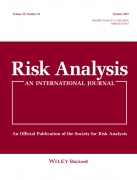Research paper is published in Risk Analysis.
Title: Network reconfiguration for increasing transportation system resilience under extreme events
Abstract: We develop a bi-level mathematical optimization model to maximize the transportation system resilience and restore its performance through two network reconfiguration schemes: contraflow (also referred to as lane reversal), and crossing elimination at intersections. Mathematical models are developed to represent the two reconfiguration schemes and characterize the interactions between traffic operators and passengers. Specifically, traffic operators act as leaders to determine the optimal system reconfiguration to minimize the total travel time for all the users (both evacuees and regular commuters), while passengers act as followers by freely choosing the path with the minimum travel time, which eventually converges to a user equilibrium state. For each given network reconfiguration, the lower level problem is formulated as a traffic assignment problem (TAP) where each user tries to minimize his/her own travel time. To tackle the lower-level optimization problem, a gradient projection method is leveraged to shift the flow from other non-shortest paths to the shortest path between each origin-destination pair, eventually converging to the user equilibrium traffic assignment. The upper-level problem is formulated as a constrained discrete optimization problem, and a probabilistic solution discovery algorithm is used to obtain the near-optimal solution. Two numerical examples are used to demonstrate the effectiveness of the proposed method in restoring the traffic system performance.




